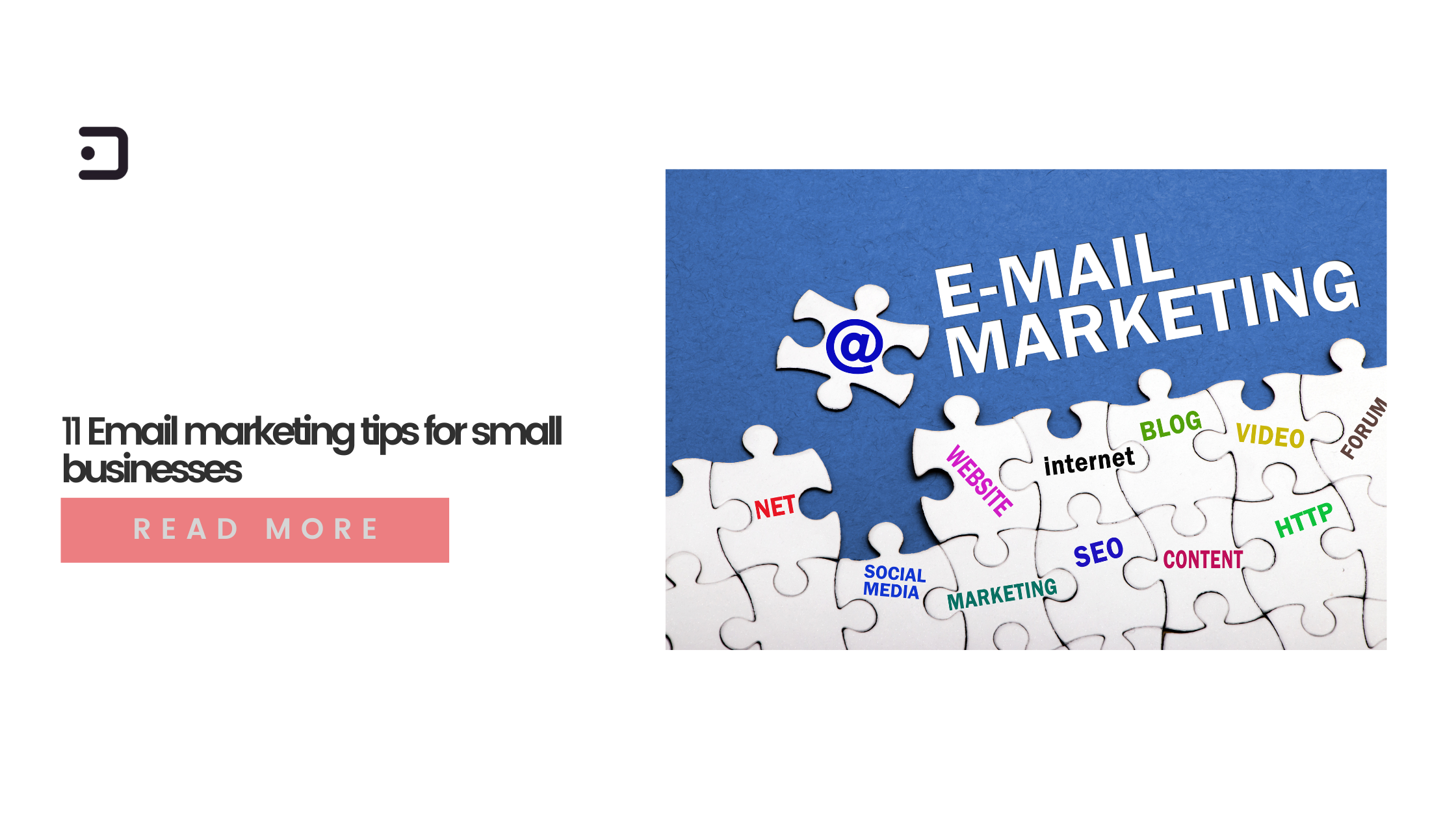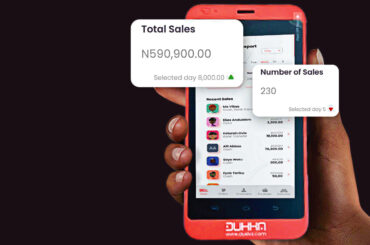Take a deep breath and think of chocolate-flavoured ice cream. Imagine scooping it up with the right blend of gummy bears and dark chocolate pebbles. Now, if the flavour of your emails doesn’t taste like this, you have no business sending them to your customers.
Email marketing is a crucial tool for small businesses, but it can be confusing when you first start. We don’t want you to make the mistake of attracting uninterested customers. So, we’re bringing you 11 email marketing tips for small businesses that are easy to implement and even easier to maintain over time.
- Make it easy for new subscribers to sign up.
Keep in mind that you can’t send any emails unless you have customers to contact.
To make it easy for visitors to sign up for emails, make sure your website has clear calls to action (CTAs) for email signup.
Also, know that customers are very selective about giving out their email addresses. So, communicate how they can benefit from connecting with you. Will you send them newsletters, discounts, or helpful information that is hard to find elsewhere?
- Build relationships with personalised emails.
Direct access to your audience’s inboxes is made possible by email. Don’t misuse this access by sending shoddy or valueless content.
People have very specific needs, wants, and interests, so generic pitches rarely succeed. Personalised emails, on the other hand, stand out in the inbox as highly relevant.
Personalising your emails is much more than adding your customer’s first name. It also involves understanding their needs and interests and then tailoring your emails to meet them.
- Be specific with your request.
Your email should be clear enough for the recipient to understand what action you want them to take. The email could, for instance, ask the recipient to click on a link to a website where they can learn more about your products or services; ask them to sign up for a webinar; or ask them to be connected to the appropriate person in the business. Your email should prompt the reader to take some further action, and you will typically see a higher conversion rate if you make it simple for them to do so.
- Be smart with the subject line.
Keep the subject line short and direct. If the message is about an upcoming sale, state the specifics in the subject line. Specify again if it’s about something else. Avoid using poor subject lines because that is one of the main reasons emails are not opened.
- Never forget the visuals.
Email marketing shouldn’t be limited to words alone. Graphics, images or even a video must be added. Your audience wants to see that, so show it to them. Also, keep in mind that they might want to read emails on their mobile devices, so make sure the graphics are optimised for the small screen.
- Email automation can save you time.
With email automation, you can send the right email to the right audience at the right time. You can program emails to be sent in response to a particular action by automating the process.
For example, an automated email should be sent out as a confirmation after a purchase. A buyer can also be informed via an automated tracking email when a product is dispatched for delivery.
You can also program an entire set of welcome emails to be sent automatically to new subscribers regularly.
- Create loyal customers by nurturing a relationship.
Email marketing is about building a relationship that will last for years rather than just getting a sale. Customers, not your own business, should be the main focus of your emails.
Start by creating emails that are focused on finding solutions to the issues that your readers are facing. Make sure that every piece of content you create, including videos, headlines, and CTAs, is specific and benefits-focused.
Remember that one of the best ways to communicate with your audience is through email. So send out helpful information, updates, deals, reminders, support, and more through your emails.
Relationships go both ways. So, don’t just tell your audience things; instead, engage them in a conversation.
- Don’t use no-reply email addresses to increase credibility.
It’s important to have a reply address that your customers can respond to. The “from” address that originates from you is your reply address. You can guarantee a better customer experience by including a “from” address that recipients can reply to.
Deliverability may also be affected by a no-reply email address because it may be blocked by spam filters and is more likely to be flagged as spam by the recipient.
Have your emails come from a real person, or a support address like customersupport@domain.com, rather than having the sender address as noreply@domain.com
Also, don’t forget to check your inbox! Assign someone to actively manage this email address so that inquiries from your customers are promptly addressed.
- Don’t be a spammer—Never purchase an email list.
It is never worth it to purchase email lists. If there is one email marketing guideline that every business must abide by, it is this: Never buy contact lists.
Sending emails to people who never requested to hear from your brand will do more to damage your reputation than anything else.
People on a purchased list did not choose to receive your emails, so they won’t like it if you contact them without their permission. They’ll probably assume you’re a spammer and report your emails.
- A/B split testing can help you create better emails.
Testing is important for improving your email performance. We frequently assume that certain things will or won’t be successful with our audience.
By sending two different emails to two different groups, A/B testing enables you to test your theories. Split testing will help you understand what makes your audience respond favourably.
To run a split test on emails:
- Decide what you want to test.
- Set goals for your tests.
- Make only one change (in terms of colour, size, message, etc.) across both emails.
- State your expectations for the result and why.
- Test more often to stay current with audience changes.
- Use data analysis to modify your approach.
To identify what is working and what needs to be improved, you should constantly review your email data.
The following are some of the most crucial metrics to consider:
Delivery rate: The percentage of emails that were delivered without bouncing.
Open rate: The percentage of people who opened your email campaign.
Click-through rate: The percentage of people who clicked on a link in your email.
Conversion rate: The percentage of people who completed the desired action, like signing up for a webinar.
Unsubscribe rates: The percentage of people who opt out, or unsubscribe, from your email list.
In Conclusion:
Email marketing is a popular and effective way to reach customers around the world. It may take time for you to learn the best strategies to engage your customers, but once you master email marketing, your business will surely reap the rewards.
…………………………………………………………………………………………………………………
About Dukka
Dukka is a leading bookkeeping and payments app. We provide solutions for bookkeeping, payments, cash flow management, and access to finance for small businesses in Africa. We are building an OS for commerce for African merchants.
To learn more about what Dukka is doing or to have a general chat, visit Dukka.com.





